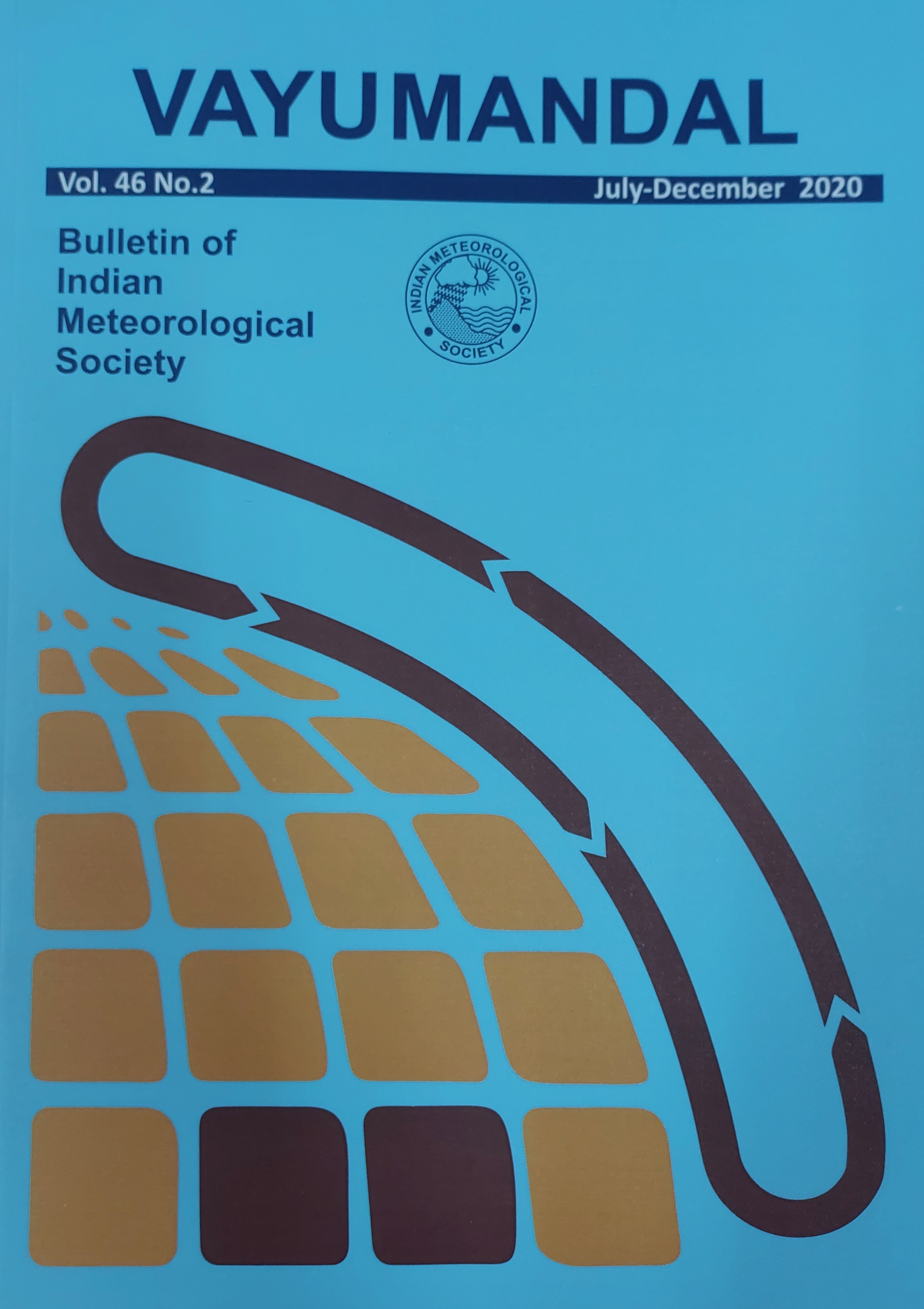Cloud Seeding in Karnataka — Initial Results
Abstract
The southern State of Karnataka in India falls in the rain shadow region and is highly prone to the occurrence of drought conditions. Most of the monsoon rainfall occurs in July and August with few rainy days from September to December in the northeast monsoon season. Most of the agriculture being rain-fed, the impact of deficient rainfall is very high, and the State Government took up cloud seeding operations during 2017 and 2019 to enhance rainfall. The basic infrastructure for the cloud seeding operations consisted of the installation of three Doppler Weather Radars at strategic locations and calibration to monitor potential clouds for seeding over Karnataka. The hourly INSAT satellite data was used to monitor cloud top temperature, cloud motion and potential water content. Radiosonde ascents supported the observations at Gadag, Bengaluru and Solapur. The high-resolution weather model forecasts generated by India Meteorological Department and Space Applications Centre of Indian Space Research Organisation were used to identify locations of convective cloud development. Two cloud seeding aircrafts (Beach Aircraft King Air 200) of Weather Modification INC, the USA with meteorological instruments and cloud seeding equipment were operated. The daily advisory was generated to assist the seeding operations, with aircraft observations of temperature, liquid water content and updraft winds helping in target cloud identification. Both hygroscopic and glaciogenic seeding was carried out. The data from the dense rainguage network of over 6000 automatic and telemetric rainguages operated by the Karnataka State Disaster Management Centre was utilised to study the impact of cloud seeding operations. This paper deals with the initial results of the evaluation of seeding using qualitative and quantitative methods. The impact of seeding is seen to depend on the prevailing synoptic condition, and preliminary results show an increase of 11 to 28% in rainfall in seeded areas compared to the control stations with a confidence level of >95%.
Copyright (c) 2024 Vayumandal

This work is licensed under a Creative Commons Attribution-NonCommercial 4.0 International License.
All articles published by VAYUMANDAL are licensed under the Creative Commons Attribution 4.0 International License. This permits anyone.
Anyone is free:
- To Share - to copy, distribute and transmit the work
- To Remix - to adapt the work.
Under the following conditions:
- Share - copy and redistribute the material in any medium or format
- Adapt - remix, transform, and build upon the material for any purpose, even
commercially.


